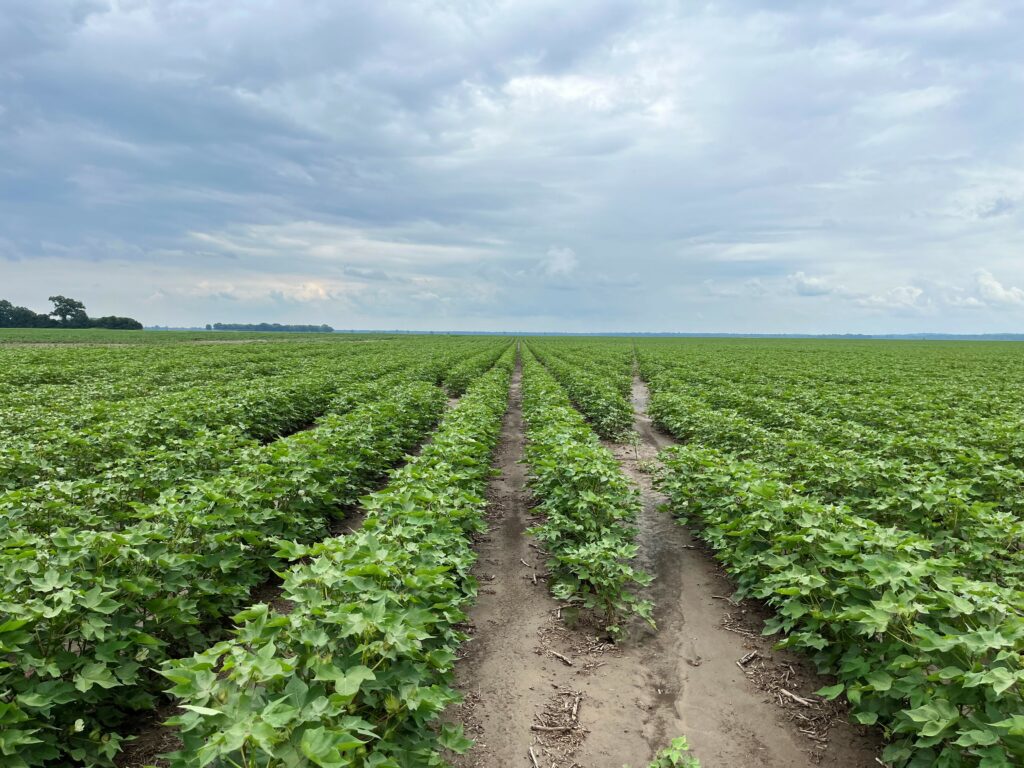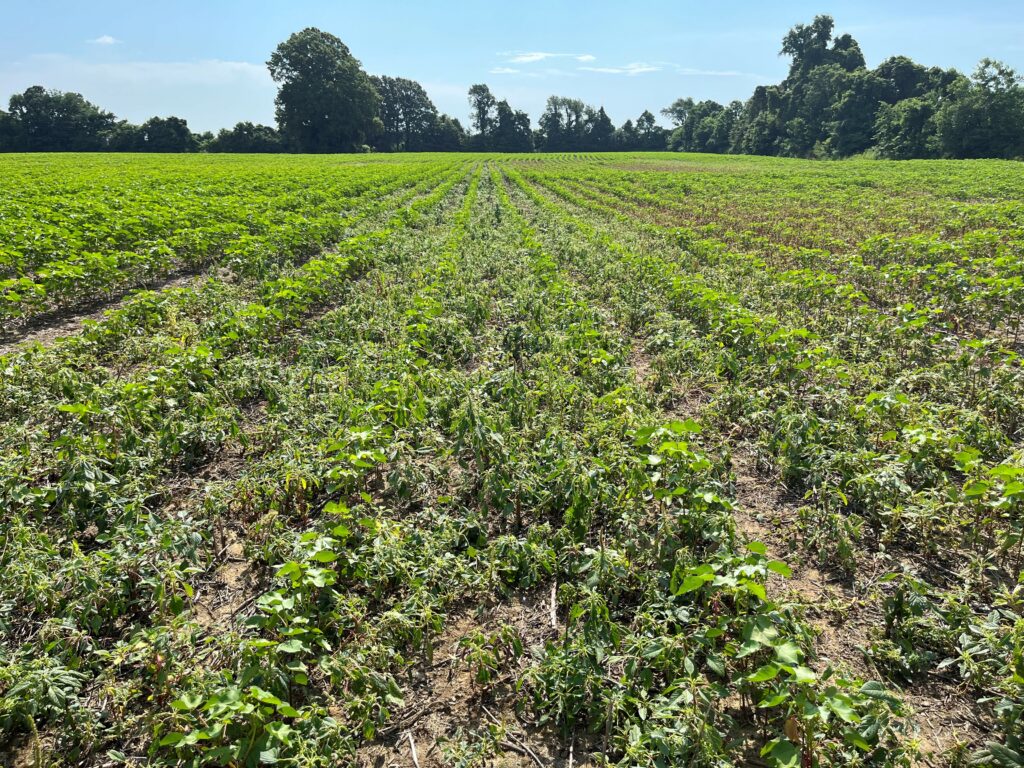
I have had the opportunity to visit fields where dicamba application/s failed to control Palmer amaranth and observe the success and failure of follow-up weed control tactics. On the positive side, where more timely and diverse weed control tactics were employed Palmer amaranth control was often a success. In a couple of cases, timely Liberty applications on Palmer amaranth escapes often provided 70 to 80% control. Follow-up hooded applications followed by cultivation increased Palmer control in these fields to greater than 95% (Picture 1).
Another “new” weed control tactic, applying Zidua via fertilizer, was also used in some of these fields and did a very good job stopping any more pigweed emergence, thus putting less pressure on dicamba and Liberty.
On the other hand, in other fields where more dicamba was the only weed control tactic used or in fields were Liberty was not applied timely, pigweed control by early July was no better than 60%. (Picture 2). Large areas of these fields have severe pigweed infestations that are beyond control by any herbicide application. These weeds will be present at harvest and contribute significant seed to the soil seed bank for next year. (Picture 2).

What is common across all these fields is the increase in herbicide costs. Several farmers have reported that they have spent over $100/A just on herbicide to control one weed. This really circles back to where herbicide input costs were before Xtend crops were common.

